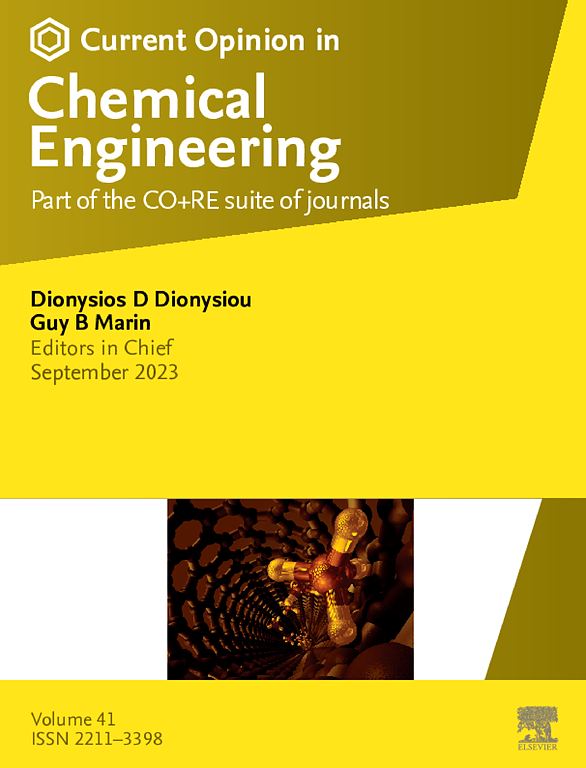解码微塑料、多氟烷基物质和内分泌干扰物之间的相互作用:吸附动力学和毒性
IF 6.8
2区 工程技术
Q1 BIOTECHNOLOGY & APPLIED MICROBIOLOGY
引用次数: 0
摘要
微塑料(MPs)对水生生物构成直接威胁,同时作为水生环境中有机污染物动员的载体。此外,由于其广泛使用,全氟和多氟烷基物质(PFAS)和内分泌干扰化学品(EDCs)已成为全球关注的重大问题,因为它们在水生生态系统中的普遍存在和大量积累。迄今为止的研究主要集中在孤立的这些污染物上,而对MPs、PFAS和EDCs(三聚体)之间的相互作用和累积效应的研究相对较少。我们阐明了这三类污染物之间可能的相互作用机制,并分析了它们的综合毒性,以及适用于它们的现有监管框架和政策。我们的研究结果表明,EDCs和PFAS在MPs上的吸附主要受疏水性和静电力的控制,并且对各种环境参数敏感,包括pH、盐度、温度和溶解的有机物。这些污染物之间的相互作用是复杂的,包括机制,如阳离子-π键和生物膜的形成,所有这些都影响吸附动力学。MPs与共污染物(如PFAS和EDCs)的协同效应会加剧毒性,促进生物积累,并提高水生生物和哺乳动物的健康风险,这通常取决于暴露时间、剂量和环境条件等因素。最后,我们强调,虽然已经取得了重大进展,但仍需要作出相当大的努力来解决监管缺陷和推进旨在减轻持久性污染物影响的立法。本文章由计算机程序翻译,如有差异,请以英文原文为准。
Decoding the interactions between microplastics, polyfluoroalkyl substances, and endocrine disruptors: sorption kinetics and toxicity
Microplastics (MPs) present a direct threat to aquatic organisms while functioning as vectors for the mobilization of organic contaminants within aquatic environments. Furthermore, due to their extensive usage, per- and polyfluoroalkyl substances (PFAS) and endocrine-disrupting chemicals (EDCs) have emerged as significant global concerns due to their pervasive presence and substantial accumulation in aquatic ecosystems. Research to date has primarily focused on these contaminants in isolation, leaving the interactions and cumulative effects among MPs, PFAS, and EDCs (trifecta) relatively unexamined. We elucidate the probable interaction mechanisms among these three categories of contaminants and to analyze their combined toxicity, as well as the existing regulatory frameworks and policies applicable to them. Our findings indicate that the sorption of EDCs and PFAS onto MPs is predominantly governed by hydrophobic and electrostatic forces and is sensitive to various environmental parameters, including pH, salinity, temperature, and dissolved organic matter. The interactions among these contaminants are intricate, encompassing mechanisms such as cation-π bonding and biofilm formation, all of which influence the dynamics of sorption. The synergistic effects of MPs in conjunction with co-contaminants, such as PFAS and EDCs, exacerbate toxicity, promote bioaccumulation, and elevate health risks for both aquatic organisms and mammals, typically contingent upon factors such as exposure duration, dosage, and environmental conditions. In conclusion, we underscore that while significant advancements have been achieved, considerable efforts are still required to address regulatory deficiencies and to advance legislation aimed at mitigating the impact of persistent pollutants.
求助全文
通过发布文献求助,成功后即可免费获取论文全文。
去求助
来源期刊

Current Opinion in Chemical Engineering
BIOTECHNOLOGY & APPLIED MICROBIOLOGYENGINE-ENGINEERING, CHEMICAL
CiteScore
12.80
自引率
3.00%
发文量
114
期刊介绍:
Current Opinion in Chemical Engineering is devoted to bringing forth short and focused review articles written by experts on current advances in different areas of chemical engineering. Only invited review articles will be published.
The goals of each review article in Current Opinion in Chemical Engineering are:
1. To acquaint the reader/researcher with the most important recent papers in the given topic.
2. To provide the reader with the views/opinions of the expert in each topic.
The reviews are short (about 2500 words or 5-10 printed pages with figures) and serve as an invaluable source of information for researchers, teachers, professionals and students. The reviews also aim to stimulate exchange of ideas among experts.
Themed sections:
Each review will focus on particular aspects of one of the following themed sections of chemical engineering:
1. Nanotechnology
2. Energy and environmental engineering
3. Biotechnology and bioprocess engineering
4. Biological engineering (covering tissue engineering, regenerative medicine, drug delivery)
5. Separation engineering (covering membrane technologies, adsorbents, desalination, distillation etc.)
6. Materials engineering (covering biomaterials, inorganic especially ceramic materials, nanostructured materials).
7. Process systems engineering
8. Reaction engineering and catalysis.
 求助内容:
求助内容: 应助结果提醒方式:
应助结果提醒方式:


